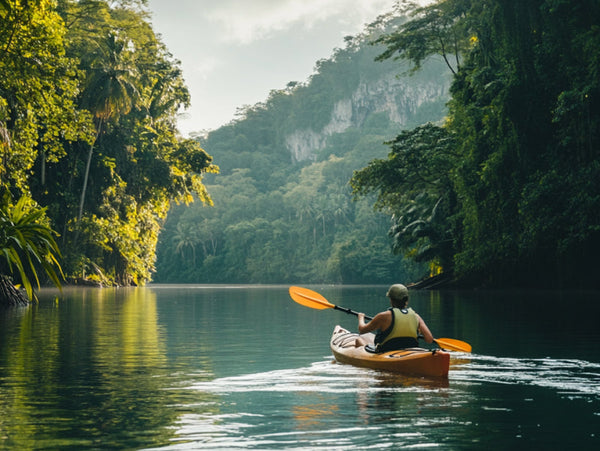Air Travel with a Kayak: What You Need to Know

As modern airlines continue to impose stricter restrictions on baggage throughout the United States, flying across-country with your kayak might be more difficult than you'd think. Today, traveling with a Kayak is almost as tough as trying to visit another country with a firearm in your luggage.
The number of air carriers that are willing to store your kayak in a safe place for you while you relax in business class is dwindling, and you'll find that you have to tick a lot more boxes just for the chance of claiming your boat at the end of your journey. To make sure that you're prepared for a round-the-world kayaking adventure, here's what you need to know about air travel with a kayak.
Only a Few Airlines Will Travel with Kayaks
The most important thing you can do if you're preparing to travel to a different country, or even across the USA with your Kayak, is find out which airlines are still willing to accept boats. Currently, some of the biggest airlines in the USA, including Delta and American Airlines, explicitly state in their terms and conditions that they will not transport kayaks. Importantly, there are sometimes exceptions available for people who need to travel with a kayak for specific reasons. For instance, United Airlines will transport kayaks for the USA's official kayaking team.
Virgin America, Southwest, Frontier, and Alaska Airlines are some of the major domestic air carriers that are capable of accepting boats and kayaks today. If you're travelling internationally, or with a different airline, make sure you do your research before you buy your tickets.
Make Sure You Understand Restrictions and Baggage Policies
While you're reading up on your airline to find out whether they're willing to accept kayaks and boats as baggage, it's a good idea to extend your knowledge about baggage restrictions, fees and policies. The more you find out now, the less stress you'll have to deal with later on. Some airlines have policies, for instance, that treat paddles and kayaks as two separate pieces of baggage.
One thing that you will need to come to terms with is that most of the airlines that do accept kayaks and boats will charge excess baggage fees to carry them. If you want to travel around the world with your trusty kayak, then you're going to need to be prepared for some significant fees. It's also worth keeping a copy of the airline's policy on-hand, so you can argue if they try to charge more than necessary.
Be Prepared for Anything
Finally, remember that you should always be prepared if your paddle or boat ends up lost, or broken. Ultimately, you should never leave the check-in area until a handler has taken your kayak away, as this is a good way to make sure that your boat doesn't simply get forgotten about. You'll also need to hold onto your baggage tags until you arrive at your destination and collect your belongings.
If your kayak ends up broken, lost, or destroyed for any reason, then you're going to need to hold the airline accountable for the damages, and your baggage tags are the only way to do that.
Leave a comment
Comments will be approved before showing up.
Also in Blog

How to Choose the Right Kayak Anchor
Choosing the right kayak anchor can make all the difference when it comes to staying steady on the water. This guide walks you through everything you need to know about selecting the perfect folding kayak anchor

What To Do When Your Kayak Capsizes
Although kayaks are designed for stability no matter the conditions, accidents happen and knowing what to do can help you avoid an unpleasant experience. Preparedness and technique are key components to controlling a sometimes scary situation.


